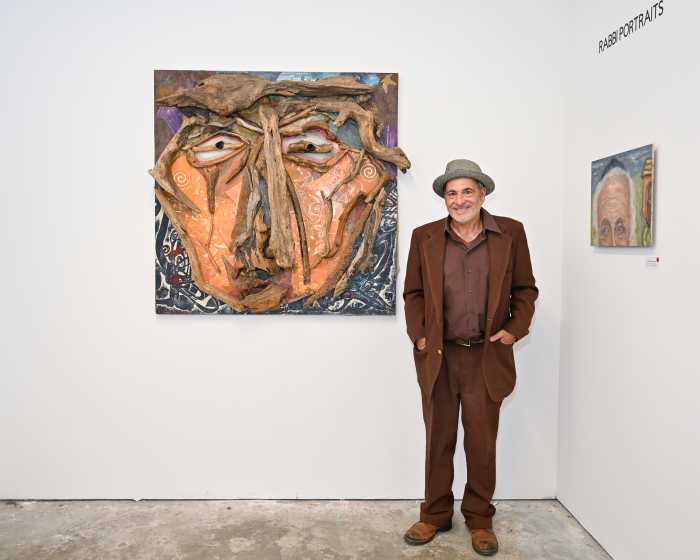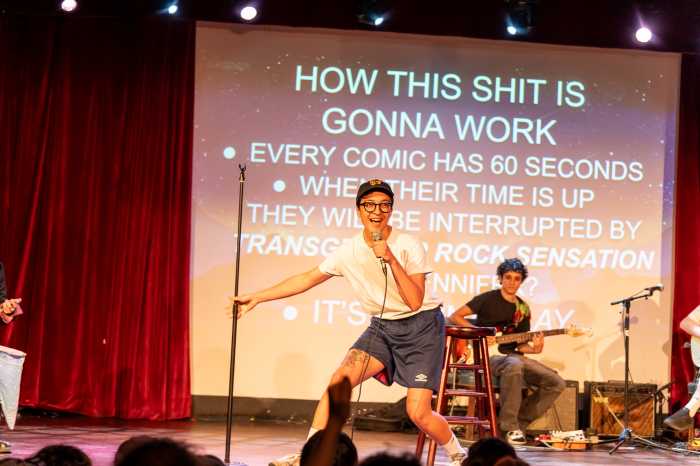Arts Gowanus and the Old Stone House are seeking artists to contribute to their upcoming exhibit “Brooklyn Utopias: Along the Canal,” asking creatives of all kinds to submit their ideas for what a “utopia” would look like for the canal and the neighborhoods it runs through.
The show, which will feature multimedia pieces in a gallery at the Old Stone House and printed banners hung on the fences at the J.J. Byrne Playground in Park Slope and Coffey Park in Red Hook, is the most recent installation of “Brooklyn Utopias,” a series of exhibits launched by artist and curator Katherine Gressel in 2009.
This year, as the show expands with a new partner, Arts Gowanus, and a new exhibition location in Red Hook, the curators are looking toward a hypothetical — or existing — “utopian” Brooklyn: an ideal or perfect vision of the borough, with a focus on Gowanus, Park Slope, Carroll Gardens, Cobble Hill, and Red Hook.
Keeping in mind at least one of those neighborhoods, the application asks artists three questions:
- What does a “Brooklyn Utopia” look like for you, specifically in the neighborhoods bordering the Gowanus Canal?
- How can this area’s unique history, as well as current developments, inform its future?
- What is the role of artists in creating a more “Utopian” Gowanus?
The idea for “Brooklyn Utopias” was inspired by an art show Gressel took part in during the 2008 recession. She was living in the rapidly-changing neighborhood of Prospect Heights and noticed that a lot of the artists involved in the show were exploring the ideas of gentrification and their different visions of the future of Brooklyn.
Gressel wanted to bring those ideas together, into a show solely focused on how people imagined the future of the borough. The concept of a utopia was inspired by her own upbringing in Manhattan — when she was growing up, Brooklyn wasn’t seen as a desirable place to live, something that started changing rapidly as younger people began moving there and construction boomed, then stalled during the financial crisis.

“The original show kind of dealt with all of those issues,” Gressel said. “What is the right vision for Brooklyn, is there too much overdevelopment, are we turning into kind of another suburb with all these privatized buildings? Or, are there things that are at risk of being lost, these sort of traditional Brooklyn communities.”
As the years passed, “Utopias” reflected the big issues of the day — past installations have considered urban farming, transit and transportation, and the role of art in inequality.
“With the Gowanus show, I think it was in response to both the desire to keep supporting local artists and collaborating with Arts Gowanus, and also responding to the new rezoning of the neighborhood, which has been a really big thing in the news and affecting those communities,” Gressel said.
Together, she and the Arts Gowanus team — including executive director Johnny Thornton, who is also curating the show — decided they also wanted to make a concerted effort to reach out to other parts of Brooklyn, which led to a collaboration with the Red Hook Art Project, headed by Tiffiney Davis, and the new exhibit space at Coffey Park.
Altogether, hundreds of banners featuring submitted artwork will hang on the fences at J.J. Byrne and Coffey Park, giving the curators space to invite work from people in the neighborhood who might not consider themselves artists first, something Thornton appreciated as a collaborator on last year’s show.
“Last year, we had a lot of great portraiture done by people who wouldn’t consider themselves photographers, who contributed,” Thornton said. “Resiliency during COVID sort of spoke to them. We’re hoping this year, the same happens. People who really want to envision a better future, and what would that look like, can submit work even if they don’t have an active studio practice or consider themselves artists. It’s a great way to open up this set of ideas to the community.”

Inside the Old Stone House, there’s space for hanging work, like paintings and drawings, as well as small 3-D pieces and monitors for video projects. No matter what the format, Gressel encouraged submissions from anyone who has a strong idea for a Gowanus utopia.
The team will also be reaching out to youth organizations to solicit art from the community’s youngest members, and will have staff on hand to help photograph and lay out work for the banners. In addition, Gressel said, potential exhibitors can reach out to the show’s curators or visit the Old Stone House to brainstorm ideas and put a fine point on their submissions if they’re not well-versed in creating visual art.
“There’s a lot happening in Gowanus right now, with the rezoning just passing, our organization has been really involved in trying to find a more equitable way to move forward,” Thornton said. “But we are really at a crossroads, and getting the community’s ideas of what a better Brooklyn looks like, and what the ideas can be, I think, is really important.”
Submissions for the gallery show close on Feb. 7, and the deadline for the banner show is March 1. The exhibition will be on display from April 10 to Aug. 30.
The interpretation of the call doesn’t have to be completely literal, Gressel said.
“It could be, you know, a place that’s significant to them, or something they remember from the past, something they’re afraid could get lost, something that’s happening now in the neighborhood in terms of its future development that they want to respond to,” she said. “It doesn’t always have to be this utopian vision of Gowanus in the future. It can really be something meaningful to them in the present.”

























